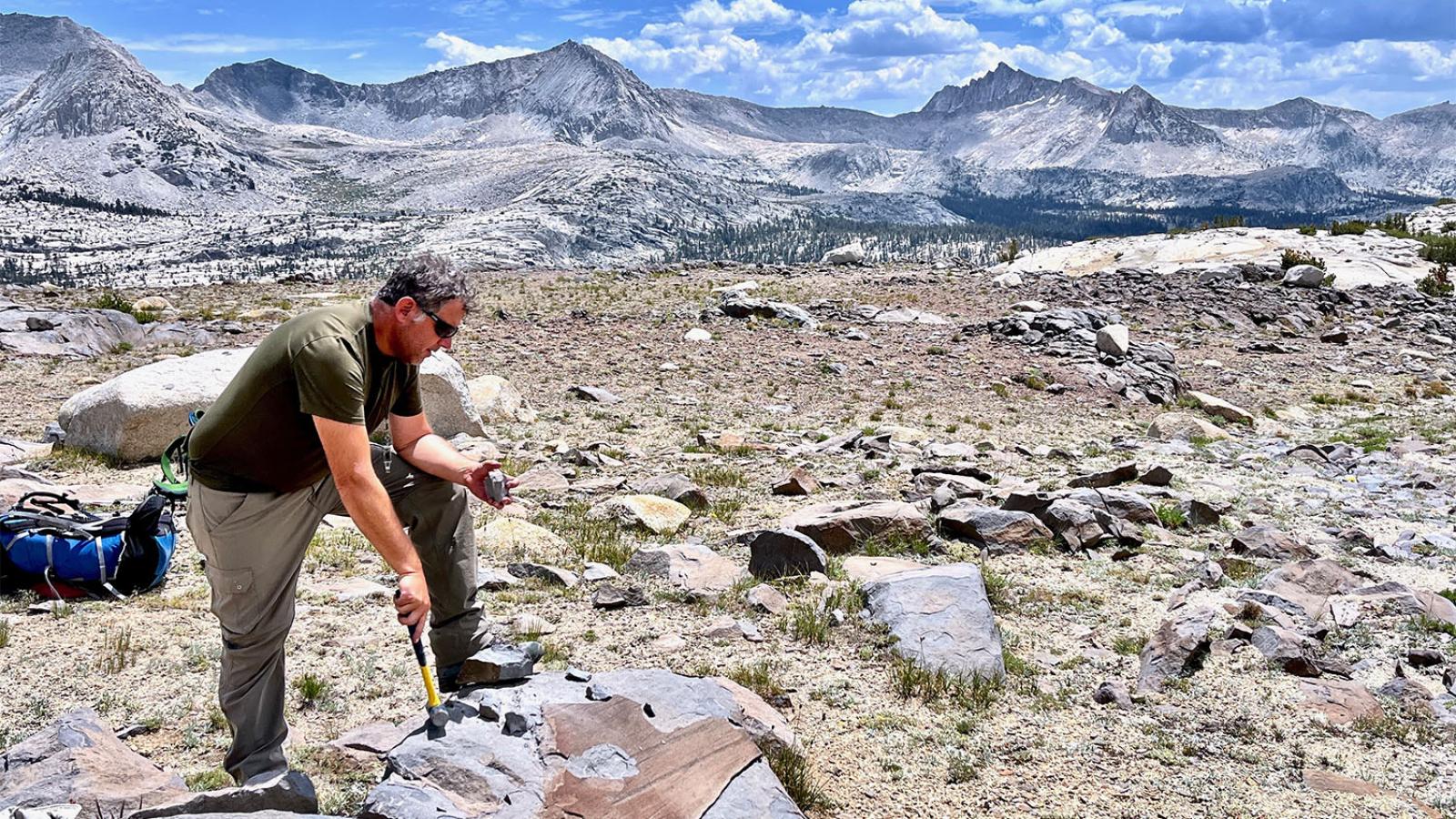The National Science Foundation (NSF) has awarded a grant of $114,000 to Jade Star Lackey, associate professor and chair of the geology department. Over the next three years, he will be collaborating with Emily Cooperdock from the University of Southern California and Jaime Barnes of the University of Texas-Austin on research into the behavior of halogen elements in igneous rocks of California’s Sierra Nevada.
Lackey is a “hard rock” specialist who studies processes of geology that are recorded in Earth’s igneous and metamorphic rocks. For years, he and his students have explored the granites of the Sierra Nevada range in places such as Yosemite and Kings Canyon.
In this project, Lackey and fellow researchers will measure the concentrations of halogens—the elements fluorine, chlorine, bromine and iodine—in the igneous rocks that crystallized from magmas 120 to 85 million years ago to form what would become California’s Sierra Nevada mountains. Previously, these elements were not measured with regularity because of analytical challenges. The researchers will measure them in both the granitic rocks that crystallized beneath the surface and in some of the remaining volcanic rocks that erupted onto Earth’s surface.
“The main reason that we’re studying the halogen ‘budget’ is because these elements control how magmas erupt and move,” says Lackey. “Halogens strongly influence the viscosity of magmas—how ‘sticky’ they are—which is critical to understanding how they move and erupt from the crust. Indeed, the halogens also control the movement and deposition of metals.”
Another value to the research is the potential to aid in forecasting effects of global climate change. “Certain rocks help us understand what Earth’s natural tempo is for pulling carbon out of the air and burying it in rocks,” says Lackey.
One outcome of the project will be that students from Pomona and USC who study these rocks will join together on field trips and introduce other students to the rocks on the outcrops where they were collected. Some of the samples will come from an historic collection. They will be digitized using 3-D technology and hosted on the Virtual Microscope public website so that other students from around the world can examine these Sierra Nevada rocks as well.
As a child, Lackey first became interested in the power of water to move sand in a river bottom near his home in Northern California. Later, he developed a curiosity about the larger and long-term processes of geology which, he says, tap into the imagination. “It’s like reading a book where half the pages are torn out,” he says, “and you’re trying to reconstruct the story.”
Lackey says, “I love chemistry, but the kind of chemistry I do is where I’m analyzing experiments that were run by nature 100 million years ago and are now locked in crystals and rocks. That’s geochemistry.” The lore of geology, he finds, is “a combination of getting to work in the natural environment and to tell stories that the planet has hidden in its rocks.”
